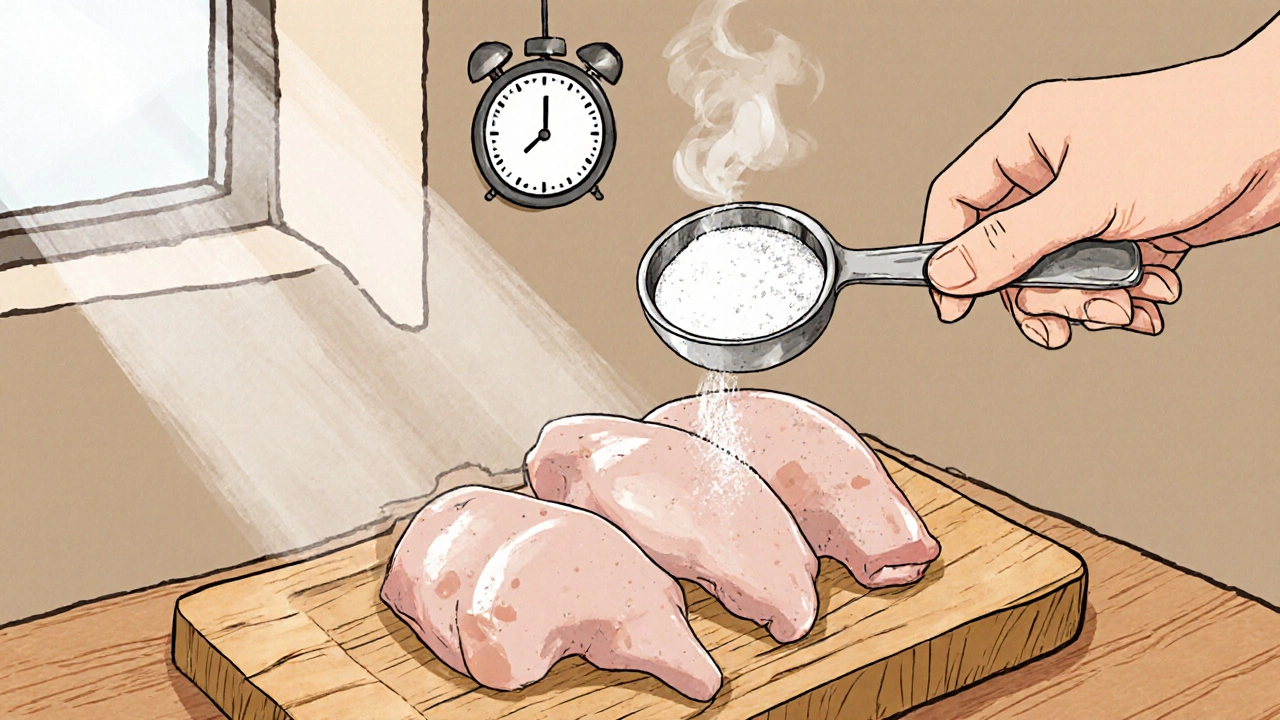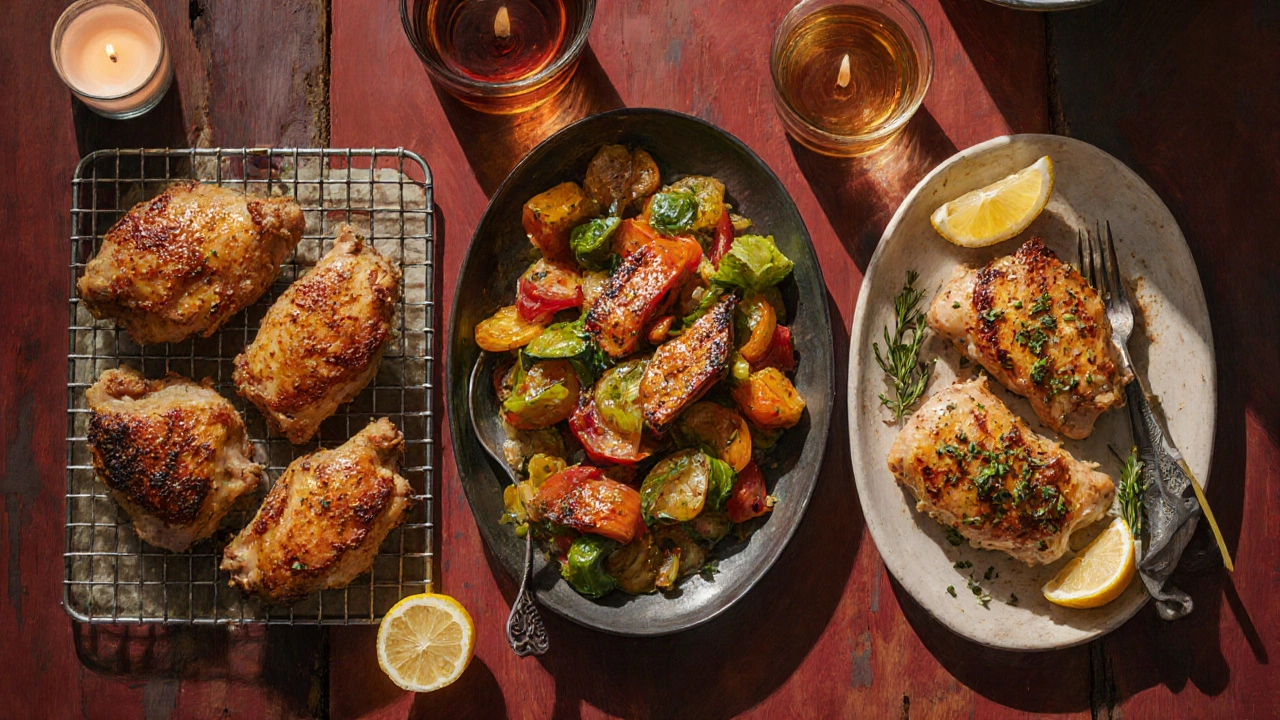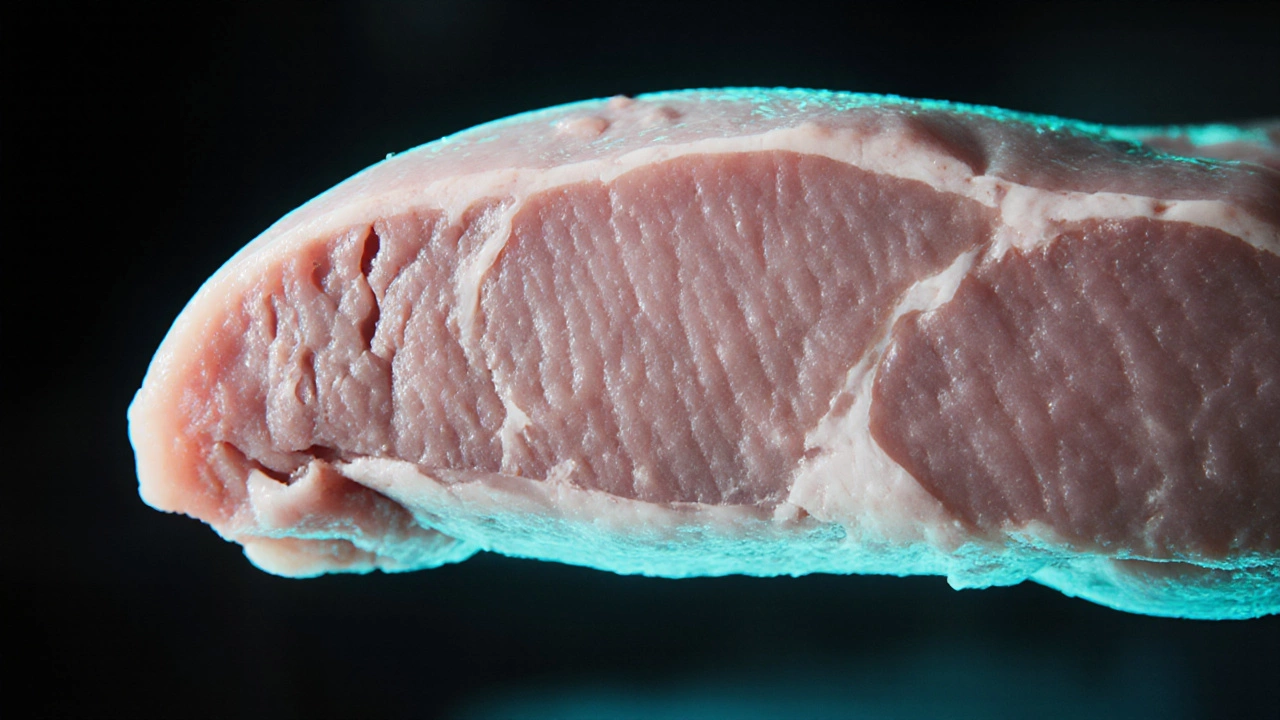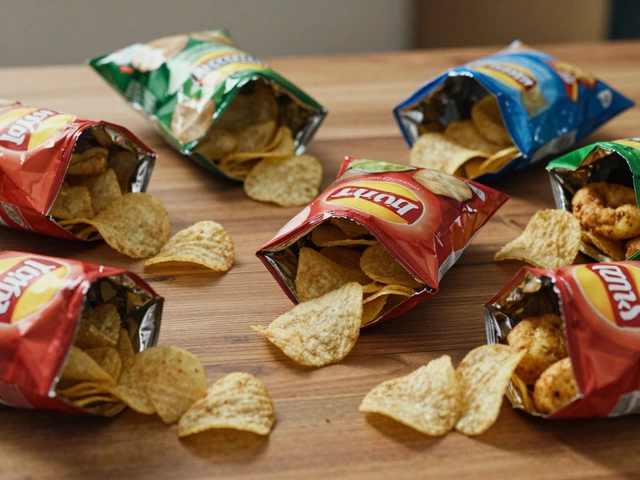Baking Soda Chicken Calculator
Ever wondered why some cooks swear by a pinch of baking soda chicken to get that melt‑in‑your‑mouth texture? The trick isn’t magic - it’s chemistry, and it works every time when you follow a few simple rules. Below we’ll break down what baking soda actually does to chicken, why it can be a game‑changer for your dinner, and how to use it without ending up with a metallic taste.
How Baking Soda Changes Chicken at the Molecular Level
When you sprinkle Baking Soda (sodium bicarbonate) onto Chicken, two key things happen. First, the alkaline nature of the soda raises the pH level on the surface of the meat. A higher pH reduces the proteins’ ability to bond tightly, which means the muscle fibers stay softer.
Second, the increased pH triggers protein denaturation. In plain English, the proteins unwind a bit, allowing them to retain more water during cooking. The result? Juicier, more tender chicken that doesn’t dry out even at higher temperatures.
What Benefits Do You Actually See?
- Tenderizing: The texture becomes noticeably softer, especially for tougher cuts like thigh meat or older birds.
- Moisture retention: Because the proteins hold onto water better, the final dish stays juicy.
- Flavor absorption: A slightly raised pH opens up the meat’s pores, letting marinades and seasonings sink deeper.
- Even cooking: The surface becomes less prone to scorching, which is handy for high‑heat methods like stir‑frying.
These benefits are most apparent when you use the right amount and timing - over‑doing it can leave a faint, soapy aftertaste.
Step‑by‑Step: Using Baking Soda the Right Way
- Measure a tiny amount: ½ teaspoon of baking soda per pound (≈450 g) of raw chicken works for most recipes.
- Distribute evenly: Sprinkle the soda over the pieces, then massage it in. If you’re using a dry rub, mix the soda directly into the spice blend.
- Rest period: Let the chicken sit uncovered in the refrigerator for 15-30 minutes. For larger breasts you can extend to 45 minutes, but never exceed an hour.
- Rinse (optional): If you’re concerned about any residual taste, give the pieces a quick rinse under cold water and pat dry. Most home cooks skip this step because the brief exposure doesn’t leave a strong flavor.
- Cook as usual: Grill, pan‑sear, bake, or toss into a stir‑fry. The chicken will finish cooking a few minutes faster due to the altered protein structure.
Tip: Combine baking soda with a light brine (salt, sugar, and water) if you want extra flavor while still gaining the tenderness boost.

Common Mistakes and How to Avoid Them
- Using too much: More than 1 tsp per pound can make the meat taste metallic and give it a slightly mushy texture.
- Leaving it on too long: Extended exposure (over an hour) may break down proteins excessively, resulting in a “cooked‑out” feel.
- Skipping the rinse when you’ve over‑salted: If your rub already contains a lot of salt, a quick rinse helps balance the flavor.
- Applying to already tender cuts: Breast meat is naturally tender; the soda’s impact will be minimal and could alter the mouthfeel.
Recipe Ideas That Shine With Baking Soda Chicken
Here are three quick recipes that let the chemistry do the heavy lifting, so you can focus on flavor.
1. Crispy Oven‑Baked Chicken Thighs
- 4 bone‑in, skin‑on thighs
- ½ tsp baking soda
- 1 tsp smoked paprika, ½ tsp garlic powder, pinch of cayenne
- Salt & pepper to taste
- Pat the thighs dry, then rub the baking soda and spice mix evenly.
- Refrigerate uncovered for 20 minutes.
- Preheat oven to 425°F (220°C). Place thighs on a rack, bake 30‑35 minutes until skin is golden and internal temperature hits 165°F (74°C).
2. Fast Stir‑Fry Chicken Strips
- 1 lb (≈450 g) chicken breast, sliced into thin strips
- ¼ tsp baking soda
- 2 tbsp soy sauce, 1 tbsp honey, 1 tsp sesame oil
- Mixed veggies of choice
- Toss strips with baking soda and let sit 15 minutes.
- Rinse briefly, dry, then marinate in soy‑honey mixture for 5 minutes.
- Stir‑fry on high heat for 4‑5 minutes, adding veggies halfway through.
3. Quick Lemon‑Herb Grilled Chicken
- 2 boneless chicken breasts
- ½ tsp baking soda
- 2 tbsp olive oil, juice of 1 lemon, 1 tsp dried thyme, 1 tsp dried oregano
- Mix baking soda with the olive‑lemon‑herb blend.
- Coat the breasts, refrigerate 30 minutes.
- Grill medium‑high 6‑7 minutes per side, until juices run clear.

Quick Comparison: Baking Soda vs. Salt vs. Baking Powder for Tenderizing
| Agent | Mechanism | Typical Ratio | Flavor Impact |
|---|---|---|---|
| Baking Soda | Raises pH → protein denaturation → water retention | ½ tsp per lb | Neutral if used briefly; can be metallic in excess |
| Salt (brining) | Osmosis draws water in then releases it during cooking | 1‑2 % of meat weight in solution | Enhances savory profile |
| Baking Powder | Contains acid + base; mainly leavens, minor tenderizing | Not recommended for tenderizing alone | May add a light, salty‑sweet note |
Bottom line: Baking soda offers the fastest tenderizing kick, but it works best when paired with a mild seasoning or a quick brine.
FAQ - All the Questions You Might Still Have
Can I use baking soda on frozen chicken?
Yes, but thaw the chicken first. Apply the soda after it’s fully defrosted, then follow the same timing rules.
Does baking soda affect the color of cooked chicken?
The surface may brown a touch faster because the higher pH promotes Maillard reactions, giving a slightly deeper crust.
Is baking soda safe to eat in small amounts?
Absolutely. The quantities used for tenderizing are far below any health concern. Just don’t exceed the recommended dose.
Can I replace baking soda with baking powder?
Not really. Baking powder’s acid component neutralizes the alkalinity, so it won’t raise the pH enough to tenderize effectively.
What’s the biggest mistake beginners make with this technique?
Using too much soda or leaving it on too long. Stick to the ½‑tsp‑per‑pound rule and keep the rest time under an hour.
Now you have the science, the steps, and the recipes to make the most of baking soda on chicken. Give it a try the next time you’re in the kitchen - you’ll notice the difference immediately.









Write a comment